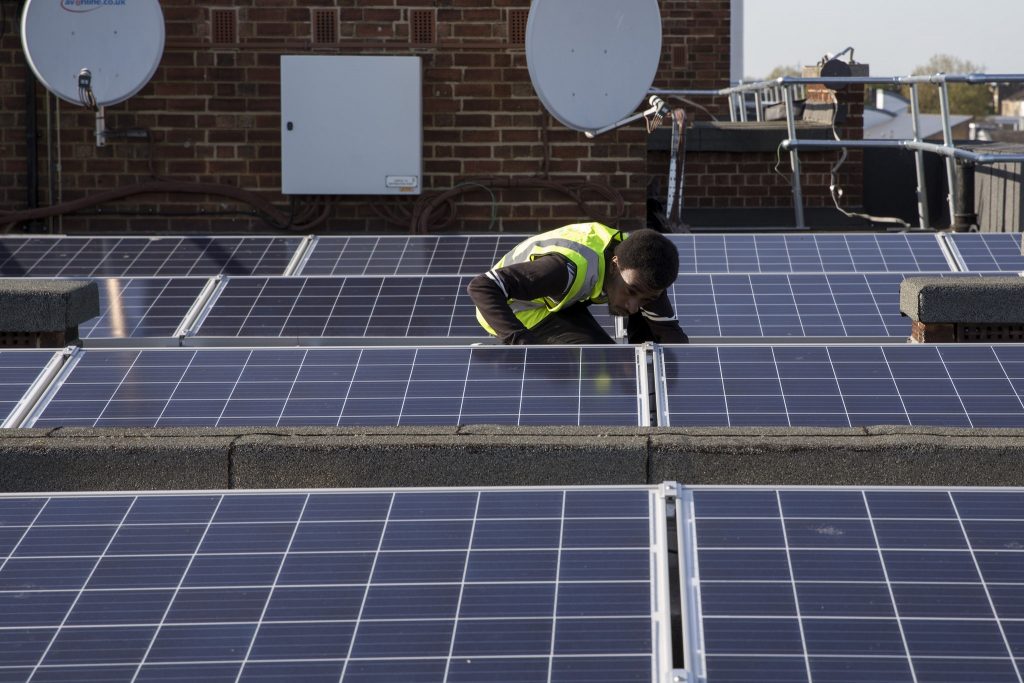What a Green industrial policy would look like
Mariana Mazzucato the founder and director of the University College London Institute for Innovation and Public Purpose. Mariana is also an IPPR Trustee.
Cross-posted from IPPR

The 21st century is increasingly being defined by the need to respond to major social, environmental and economic challenges. Sometimes referred to as ‘grand challenges’, these include climate change, demographic challenges, and promotion of health and well-being. Behind them lie the difficulties of generating sustainable and inclusive growth. These problems are ‘wicked’ in the sense that they are complex, systemic, interconnected and urgent; requiring insights from many perspectives. Poverty cannot be tackled without attention to the interconnections between nutrition, health, infrastructure and education, as well as redistributive tax policy. Grand-challenge-thinking is being applied across the world, with some of the most interesting experiments around sustainability being driven by the needs of emerging economies.
Innovation has not only a rate, but a direction. A ‘green’ directed transition must go beyond independent initiatives and discrete approaches, and be characterised by a new lens for economy-wide growth. The climate crisis can be both a carrot and a stick to create a new direction for the global economy. Change needs to be cross-sectoral, harnessing supply and demand, innovation and procurement, and public and private actors. Across the world, the green transition is taking the form of a proposed ‘Green New Deal’ – a term that is not new, but which is now picking up traction. It requires a re-direction plan for the entire economy, across different sectors and actors.
Industrial strategies, increasingly making a return to international policy discussions, are an important way to direct economy-wide innovation towards green growth, by grasping all the different policy levers a government can use. Rather than becoming a static list of sectors to support, industrial strategy must be about steering investment-led growth across different sectors towards solving problems that matter to citizens. This is what we call a ‘mission-oriented’ industrial strategy, focused on grand challenges, rather than sectorally siloed solutions. Mission-oriented policies are not just about throwing funds at problems, but about doing so in specific ways. Examples of such direction-setting policies abound, including different technology policy initiatives in the United States, France, the United Kingdom and Germany. A bold and ambitious industrial strategy can set a new relationship between the public and private sectors, working with the ‘willing’ rather than the ‘winners’ – those companies ready to commit to green growth.
In the UK, industrial strategy has seen a resurgence, attempting to address the substantial obstacles of sluggish growth and productivity, as well as leaving the European Union and potentially losing access to science funding and key innovation collaborations. UK industrial strategy has learnt lessons from the past and is structured around four bold Grand Challenges: clean growth, AI and data, the future of mobility, and ageing society. The UCL Institute for Innovation and Public Purpose (IIPP), which I direct and founded in 2018, hosts the Commission for Mission Oriented Innovation and Industrial Strategy (MOIIS), co-chaired by Lord David Willetts, which has been working with the government to ensure that from clean technologies to self-driving cars, innovation can help us live more sustainable, healthier and longer lives. The MOIIS Commission has been looking across the four Grand Challenges, through a mission-oriented lens, identifying relevant cross-sectoral actors, bottom-up projects, and paths to delivery.
In May 2019, the Commission launched a report on its findings, with eight key groups of recommendations and implementation steps for the UK government, and indeed any governments looking to implement mission oriented industrial strategies, with a green direction or with other key missions.
The report sets out that a mission-oriented industrial strategy can:
- Steer the direction of innovation-led economic growth
- Drive the UK’s international competitiveness
- Solve grand challenges through cross-sectoral missions
- Support systematically the development of science, technology and the arts
- Nurture sectoral capabilities and absorptive capacity
- Invest in public sector capabilities and work across government
- Connect with citizens, mobilising social and behavioural change
- Leverage and crowd-in other forms of investment
It also provides recommendations on how to achieve this, from rethinking procurement policy and how we set regulations and standards to drive innovation, to how to design teams in government that can break down inter-departmental silos.
Markets will not find the green direction on their own. Only when there is a stable and consistent direction for investment will regulation and innovation converge along a green trajectory. An industrial strategy is one of many ways to set this direction. The Green New Deal must have aspirations far beyond just mitigating climate change, and must be focused on new opportunities for investment and innovation – it must include finding clarity and courage in the policy arena, unlocking investment in the business sector, and supporting workers to acquire new skills. This new, inclusive green economy should be co-created rather than handed down from above – trade unions, workers’ collectives and community organisations must all be at the table from the beginning, shaping the green direction.


Be the first to comment